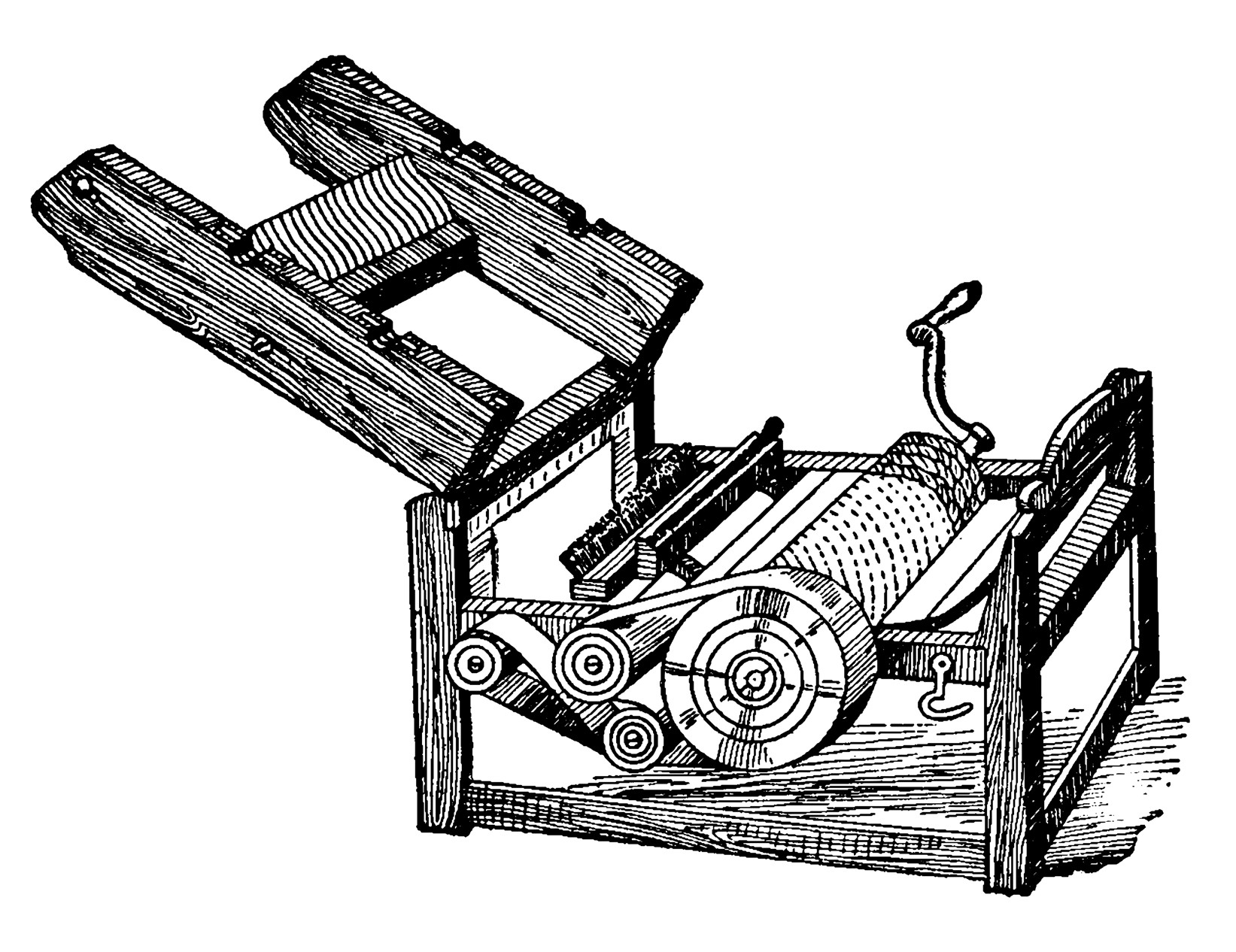
The invention of the cotton gin by Eli Whitney on a plantation outside Savannah, Georgia, in 1793 transformed the economy and society of the American South. Before 1793, cotton was simply uneconomic to grow because the balls of cotton that were picked from the cotton plant contained seeds that were tricky and slow to remove by hand. Only long-staple cotton that attracted premium prices was worth growing, and that could only be grown in a few selected areas where the climate was suitable on the coasts of South Carolina and Georgia.
Before the American Revolution, slavery had become dominant in two regions of British North America – Chesapeake Bay where tobacco was the main cash crop, and coastal South Carolina where rice was grown. Both crops faced problems. Tobacco farming exhausted the soil and was not sustainable in the long term. Rice cultivation was immensely profitable but only possible in the flat marshlands near the coast where water flows could be managed to flood and drain fields at the right times. It was not possible away from slow moving rivers.
Your organisation does not have access to this article.
Sign up today to give your students the edge they need to achieve their best grades with subject expertise
Subscribe




